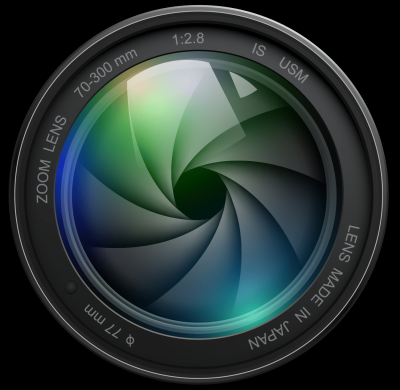Hey there! If you’re into photography or just love collecting prints, you’ve probably heard of Shutterstock. It’s a huge platform where photographers and artists share their work, and you can buy licenses to use or print those images. But how does the pricing work, especially when it comes to older prints? That’s what we’re diving into today. Shutterstock offers various licensing options—from standard to enhanced licenses—and understanding these can help you make smarter choices when purchasing old prints for personal or commercial use.
How Shutterstock Determines Charges for Old Prints
When it comes to pricing old prints, Shutterstock takes a few key factors into account to determine how much you’ll pay. First up, the age of the image itself plays a role. Older images, especially those that have been widely used or have become popular over time, might be priced differently than newer uploads. But it’s not just about age—here’s what else influences the charges:
- Image Resolution and Size: Higher resolution images suitable for large prints tend to cost more because they offer better quality for printing purposes.
- License Type: Standard licenses are cheaper and suitable for personal use or small-scale printing. If you’re planning to use the print commercially or in a large format, an enhanced license might be necessary, which costs more.
- Usage Rights and Limitations: The scope of how you can use the print affects the cost. For example, exclusive rights or extended usage rights cost extra.
- Historical Popularity and Demand: Some older prints may have gained popularity over time, making their licensing more expensive because of their demand.
In addition, Shutterstock sometimes offers discounts or bundles for older prints, especially if you’re purchasing multiple images or licenses. It’s always a good idea to check the specific licensing details for each image, as prices can vary quite a bit depending on these factors. Understanding how these elements influence the pricing helps you make better decisions and ensures you’re getting the most value for your investment in old prints.
Factors Influencing Pricing for Vintage and Archived Images
When it comes to vintage and archived images on Shutterstock, several key factors play a role in determining their pricing. Unlike newer photos, these images often have a unique history and rarity that can make them more valuable and, consequently, more expensive.
First, image rarity and uniqueness are major players. If an old print is one of a kind or part of a limited collection, Shutterstock may price it higher because of its exclusivity. Think of it like rare collectibles—scarcity tends to drive up value.
Next, condition and clarity matter a lot. Vintage images that are well-preserved, high-resolution, and clear will generally command a higher price. Conversely, if an old print is damaged or has visible wear, its value might decrease, though some buyers look for the authentic vintage feel regardless.
Another factor is historical significance or subject matter. Images of iconic moments, famous personalities, or culturally important scenes tend to be priced higher because of their demand and cultural value. For example, a vintage photo of a historic event will likely be more expensive than a generic old landscape.
Additionally, license type and usage rights influence price. Shutterstock offers various licenses, from standard to enhanced or extended. For vintage prints, choosing an extended license for broader use can significantly affect the cost.
Finally, market demand and trending topics also impact pricing. If vintage images are trending due to current events or popular themes, prices may be temporarily higher due to increased demand.
Understanding these factors helps buyers make informed decisions. Whether you’re a designer, marketer, or historian, knowing why a vintage image costs what it does gives you better insight into your purchasing options and how to find the best value for your needs.
Steps to Purchase Old Prints on Shutterstock
Ready to add some vintage charm to your project? Purchasing old prints on Shutterstock is straightforward once you know the steps. Here’s a simple guide to help you navigate the process smoothly:
- Create or log into your Shutterstock account: If you haven’t already, sign up for an account. Existing users can just log in. Having an account allows you to manage your purchases and licenses easily.
- Use specific search keywords: Enter relevant keywords like “vintage,” “archived,” “old print,” or specific eras or subjects to narrow down your options. You can also filter results by image type, orientation, or color.
- Apply filters for vintage and archived images: Shutterstock offers filters to help you find older or vintage images. Use these to streamline your search and find authentic old prints.
- Review image details carefully: Click on images to view high-resolution previews. Check the image details, license options, and any available metadata to ensure it fits your needs.
- Select the appropriate license: Depending on how you plan to use the image—whether for personal projects, commercial use, or large-scale campaigns—you’ll need to choose the right license type. Vintage images often require extended licenses for broader usage.
- Add to cart and proceed to checkout: Once you’ve selected your images and license options, add them to your cart. Review your selections, then proceed to checkout.
- Complete payment: Shutterstock accepts various payment methods like credit card, PayPal, etc. Enter your payment details securely and confirm your purchase.
- Download your image: After payment, you’ll be able to download the high-resolution version of your old print. Make sure to save it in a safe location for your project.
And that’s it! Remember, if you’re unsure about licensing or the image’s authenticity, Shutterstock’s customer support can assist you. Happy hunting for that perfect vintage shot to bring your project to life!
Tips for Managing Costs When Licensing Old Prints
When it comes to licensing old prints on Shutterstock, managing your costs effectively can make a big difference in sticking to your budget while still getting the images you need. Here are some practical tips to keep in mind:
- Plan Your Projects Carefully: Before diving into licensing, outline exactly what images you need and how they’ll be used. This helps prevent unnecessary purchases and ensures you’re only paying for what truly adds value to your project.
- Leverage Subscription Plans: Shutterstock offers various subscription options. If you’re planning to license multiple old prints regularly, a subscription can often be more cost-effective than one-off purchases. Just make sure the plan matches your expected volume.
- Use Filters to Narrow Down Options: When searching for old prints, use filters such as image orientation, color, and date range. This helps you find exactly what you need quickly, reducing time and potential extra costs.
- Watch for Licensing Options: Shutterstock offers different licensing types—Standard and Enhanced. For most old prints used in digital media, Standard licenses suffice. Be aware of the limitations and avoid paying extra for features you don’t need.
- Consider Extended Licensing for Commercial Use: If you’re planning to use old prints extensively for commercial purposes, check whether an extended license makes sense financially in the long run. Sometimes, a higher upfront cost can save money compared to multiple standard licenses.
- Stay Updated on Promotions and Discounts: Shutterstock occasionally offers discounts or promotional deals, especially for bulk licensing. Keep an eye out for these to snag better prices on old prints.
- Archive and Reuse Images Wisely: If you’ve licensed an old print for a project and foresee using similar images in the future, consider licensing additional images at the same time. This can sometimes unlock package deals or volume discounts.
Remember, being strategic and organized when licensing old prints on Shutterstock not only helps control costs but also ensures you get the right images for your needs without overspending. Always review the licensing terms carefully to avoid unexpected fees or restrictions down the line.
Conclusion and Final Thoughts on Shutterstock’s Pricing Policy for Old Prints
To wrap things up, understanding Shutterstock’s pricing for old prints is all about being informed and strategic. While licensing older images can sometimes seem costly, especially with the variable pricing based on resolution, usage, and licensing type, there are ways to make the most of your investment.
One key takeaway is that Shutterstock provides a flexible pricing structure designed to cater to different needs—whether you’re a casual creator, a small business, or a large enterprise. Their tiered pricing, subscription plans, and licensing options aim to balance affordability with the quality and authenticity of vintage images.
It’s also important to remember that licensing old prints isn’t just about cost—it’s about value. Vintage images can add a unique touch to your projects, helping them stand out and evoke a sense of nostalgia or historical context. Investing wisely in these images can pay off in the visual impact you achieve.
Ultimately, the best approach is to stay informed about the current pricing policies, plan your image licensing carefully, and leverage available discounts or subscription plans. By doing so, you can access high-quality old prints without breaking the bank.
So, whether you’re working on a creative project, marketing campaign, or personal endeavor, understanding Shutterstock’s pricing for old prints empowers you to make smarter choices and get the most value from your licensing budget. Happy creating!


